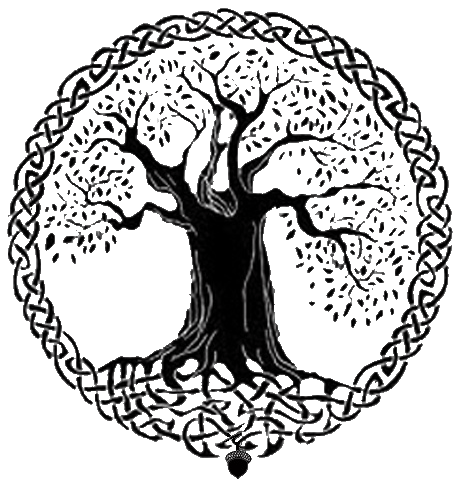 by Kierston Drier
by Kierston Drier
We have an anecdote to start off today’s Word of the Week. In a grade 11 high school english class, this columnist asked what the difference was between an Archetype and a Stereotype- and it stumped the English teacher. Eventually, the teacher explained that an Archetype has a positive connotation and that Stereotype had a negative one- and while that is an arguable point, it isn’t exactly accurate. So today, we aim to clear these definitions up. And yes, through the lense of film and television.
An Archetype, a term coined by Carl Jung, student of the infamous Freud (of the “sometimes a cigar is just a cigar”) describes a figure-type of trope that recurs throughout history in various cultures. The definition becomes increasingly dense when examined through the lense of psychology, philosophy, cultural politics and literature, but suffice to say it relates to the concept that all humans, (regardless of their era, culture or walk of life) share similar collectives fears and aspirations (such as being afraid of the unknown, or needing a singular hero for their community) and that those concepts get revisited as explored again, and again…and again.
And Archetype, as defined by the Merriam-webster dictionary, is described as “…The original pattern or model of which all things of the same type are representations or copies of,” or “A perfect example”
In film and cinema, we will take a look at some classic examples. The 1997 film, Titanic, has an archetypal love story in Jack and Rose- two star-crossed lovers that are unable to be together by some inescapable force of nature (ex. Their social class… or a sinking boat in the middle of an ocean). The concept of these two lovers-that-can-never-be is found over and over again in stories branching across geographic locations, time periods and various media- from books, plays, songs, for time in memorium. (Ex. Romeo and Juliet, Inez and Pedro).
Or the trope of the Trickster, a mischievous character, often with morally ambiguous undertones and some supernatural qualities, that creates conflict within a narrative. Think Bart Simpson (The Simpsons), Stewie Griffin (Family guy), Louise Belcher (Bob’s Burgers), or Jim (The Office).
Why do these Archetypes keep coming up in our collective media? Well, for starters, because they work. They tap into some little-understood level of our social consciousness. In a large sense, Archetypes are free of social judgements. That is not the same with Stereotypes.
A Stereotype, by definition, is “To repeat without variation” or to “give something a fixed form.” To open that definition up a bit more, it means to take elements from the individual and apply it to the general. Ex- This this man loves sports, so ALL men must love sports. Many men may like sports, but certainly not all of them.
There are numerous examples of Stereotypes in film and television and they can quickly become concerning. But let’s talk about when a stereotype can be used effectively.
- When you want to convey information very quickly.
Ex. A guy who hates sports walks through a stadium FULL of sports fans. The sports fans here will likely be presented as stereotypical sports fans. This is used to pull focus to our main character. In a day-to-day situation you may not be able to tell if a person is a sports fan, but in the context of a stadium, (a room full of people likely dressed in team-colors and wearing facepaint) will hammer-home that “fish-out-water” focus on the main character not being a sports fan.
From a writing perspective it is astute to tread carefully when working with stereotypes, as they often distil an entire group down to an (often) incorrect essence. It is prudent to avoid contributing to a cliche or negative stereotype as they can be ineffective, inaccurate and often offensive.
- Inversion of the Stereotype, for comedic purposes.This concept plays off the establishment of an expectation and then subverts it, for the sake of comedy.
An example is Cerie on 30 Rock. Her character is set up as a stunningly beautiful and relaxed assistant to Liz Lemon, and who frequently wears revealing clothing at her job. Cerie will occasionally make extremely intelligent comments, often about mathematics or physics, shocking the room. The comedy here comes from the expectation that the beautiful assistant may not be intellectual, but she is. The stereotype is broken, and comedy ensues. Without the additional break, the character would be a flat stereotype, but with the inclusion, she becomes a fuller, more well-rounded character.
Let’s pull back into this writer’s’ grade 11 english class and refocus. What exactly are Archetypes and Stereotypes? How are they different?
Archetype- Is a concept that recurs in human consciousness. In media, often a general character than can inhabit many forms, (the trickster/prankster, the wise elder, the underdog hero) They can be flawed, rich, well-rounded and deep. The essence of the character may be familiar, but as individual characters, they are unique.
Stereotype– is a reduction, or gross over-simplification of reality. It often distills the depth and diversity of a community down into one tired cliche. Humor can be derived from satirizing it, or pointing out its’ flaws in a subverted way.
So for all those going into high school this september, take a note on these two- you may even impress you english teacher.
RESOURCES
Merriam-webster.com (Definiton of Archetype and Stereotype)
Dictionary.com (Definition of Archetype and Stereotype)

Reblogged this on WILDsound Writing and Film Festival Review.
LikeLike
Reblogged this on WILDsound Writing and Film Festival Review.
LikeLike